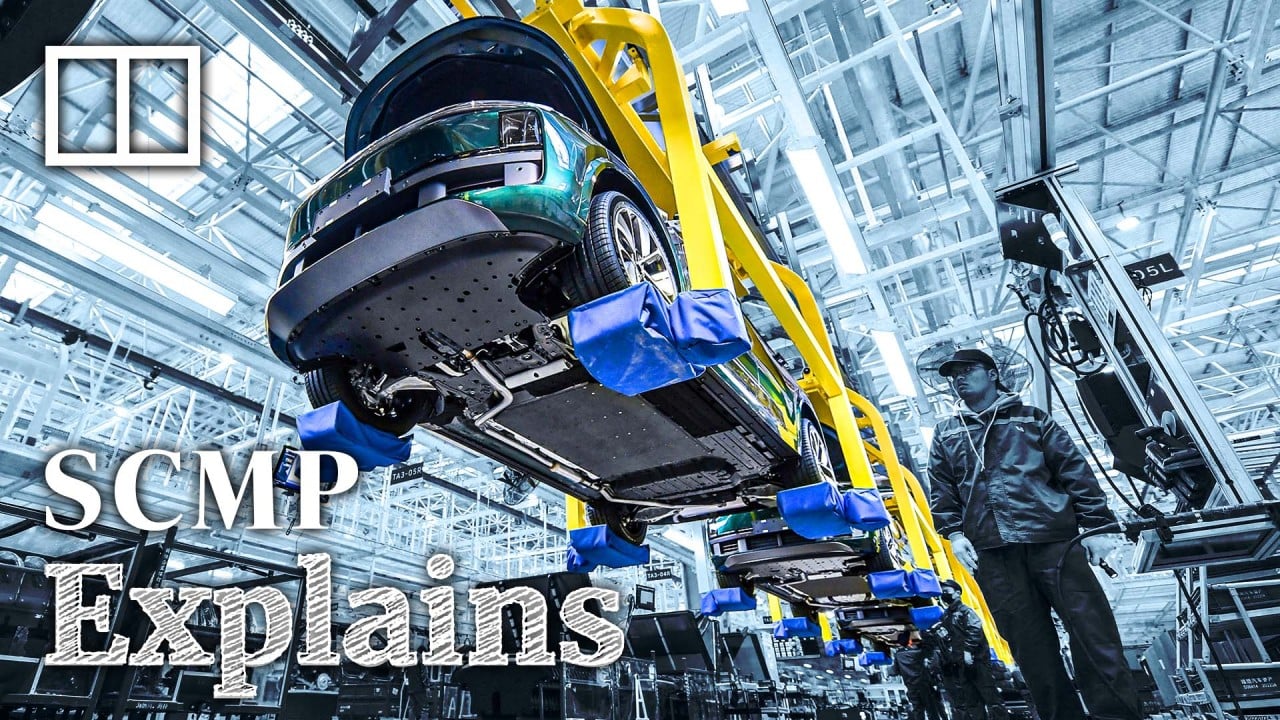
China’s tech-driven economic growth push needs ‘smarter investment’ to solve overcapacity, economist says
- Peking University economics professor Cao Heping says overproduction of consumer and industrial goods, as well as overinvestment, is a big problem for China’s economy
- Beijing has repeatedly called for new economic engines, termed ‘new quality productive forces’, as it seeks hi-tech development
Beijing should pursue “smarter investment” and refine industrial policies to address overcapacity in traditional manufacturing and infrastructure, as China has been caught in rising trade barriers amid its shift toward tech-driven growth, according to a prominent economist.
Failing to do so would risk China being trapped into years of stagnation, as seen in Japan and Europe over the past decades, according to Peking University economics professor Cao Heping.
He highlighted that overproduction of consumer and industrial goods, as well as overinvestment, are hurting China’s economic health and Beijing needs to find pragmatic patterns to spearhead its technology push, especially new materials and emerging industries, to remain competitive internationally.
When we are at a period of rapid economic structure reform, an efficient government should help adjust opportunity costs and sunk costs
“There needs to be smarter investment in areas where we are seeing overcapacity,” Cao said, adding that the support should be led by publicly-funded institutions.
“When we are at a period of rapid economic structure reform, an efficient government should help adjust opportunity costs and sunk costs for there to be an efficient market,” he added, referring to sunk costs that have already been incurred and cannot be recovered.
China’s economic slowdown is also being dragged further down by sluggish domestic consumption, low confidence from foreign investors and pressure from trade sanctions led by the United States.
‘New productive forces’: empty rhetoric, or engine for China’s future growth?
And Premier Li Qiang repeated the narrative that China’s development model would curb industrial overcapacity and be transformed to one that leads to “high-quality” production during his government work report to the annual “two sessions” last week.
China has, according to estimates by consultancy Automobility, an excess capacity of between 5 million and 10 million vehicles per year.
China must therefore find new growth points from further developing related industries that would stimulate the development of new technology and industries, including further developing chips as well as technology related to car engines.
China rails against EU’s train subsidy probe – will relations stay on track?
“Developing new materials, new energy and new systems would be the way to fix the overcapacity and bring us to a pragmatic path that would see economic growth,” Cao said.
“Firstly, materials are the foundation to produce everything. Secondly, developing energy is so that the materials can be used. Thirdly, we need to be able to put together new systems and new end-products from production of compartments and small parts.
“[Overcapacity] has made China unable to further compete with other industrialised countries through traditional large-scale manufacturing industries, because China’s industrial output value has long surpassed even the top 10 countries added all together.”


